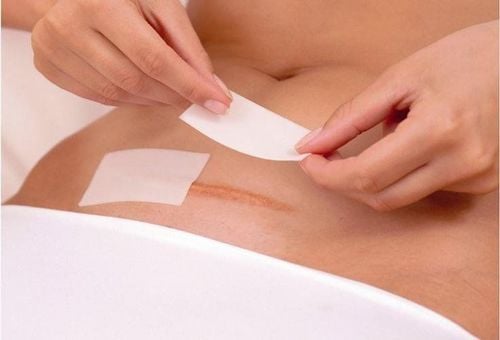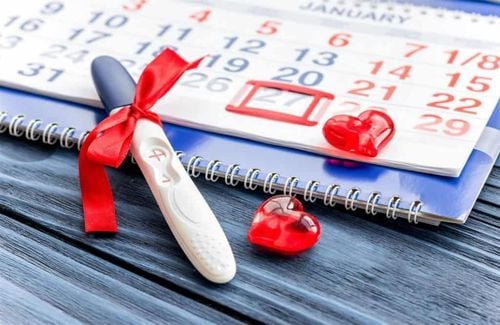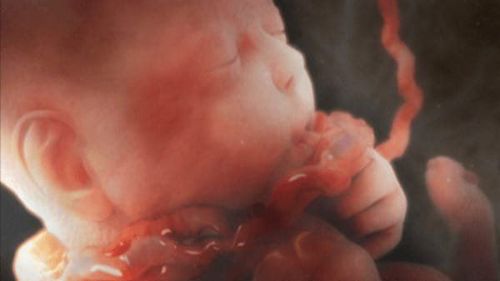This is an automatically translated article.
The article is professionally consulted by Specialist Doctor I Le Thi Phuong - Department of Obstetrics and Gynecology - Vinmec Ha Long International Hospital.
The recovery after cesarean section will be longer and more difficult than vaginal birth, blood loss is more and the risk of postpartum infection is also higher... Therefore, women having caesarean section must be more careful. about taking care and exercising to restore the best health possible.
1. Guidelines for movement after cesarean section
The first day after cesarean section: The mother turns on her own in bed, stretches her limbs, can sit up on the bed, except for cases with special indications. Day 2 after cesarean section: The mother sits up and walks gently in the room with the support of her family. On the 3rd day after cesarean section: The mother walks gently in the room and in the corridor by herself. From the 4th day onwards: Pregnant women exercise and eat normally, except for cases specifically indicated by a specialist.
Trắc nghiệm: Đau lưng sau sinh mổ và những điều cần biết
Sau sinh mổ, bà mẹ không chỉ đau đớn với vết khâu bụng dưới mà còn đối mặt với những cơn đau lưng. Mức độ đau lưng sau sinh mổ theo thống kê chiếm đến hơn 70% các trường hợp. Trả lời nhanh 5 câu hỏi trắc nghiệm sau sẽ giúp bạn có thêm kiến thức để hạn chế tình trạng này.The following content is prepared under supervision of Thạc sĩ, Bác sĩ y khoa, Tạ Quốc Bản , Sản phụ khoa , Khoa Sản phụ khoa - Bệnh viện Đa khoa Quốc tế Vinmec Phú Quốc
2. Care after cesarean section
The recovery after cesarean section will also be longer and more difficult than vaginal birth due to a lot of blood loss and the risk of postpartum infection is also higher... Therefore, care after cesarean section needs to be noted. and be more careful to quickly recover, especially when it comes to pain from the incision and taking care of a small child.2.1 Care of the incision

In the first week after giving birth, the incision is still not dry, so the obstetrician-gynecologists and midwives will take care of the pregnant woman, take care of the hygiene of the postpartum incision, give pain relievers, antibiotics or drugs. uterine contractions to avoid complications and infections. It is completely normal to use pain relievers after cesarean section, these drugs do not affect the quality of milk.
On the 3rd day, you can open the bandage and let it dry. Be careful not to let water soak the incision area.
In the second week, if sutures do not dissolve, the doctor will examine the incision, if it is dry and clean, then cut the sutures. Normally, the doctor will remove the sutures after 5 days if the mother has the first surgery, 7-8 days after the second surgery or more. If stitching with self-dissolving thread, there is no need to cut the thread.
At this time, women who have had a caesarean section should wipe their body with warm water or take a quick shower, to avoid soaking their body in a bath that will make the incision wet. After bathing, use a clean cotton ball to dry the incision, leave the open incision without a bandage, and keep the incision clean and dry. The incision can be cleaned with 10% betadine or povidine solution, which helps the incision heal quickly and avoid infection. Do not apply antibiotics, or apply betel leaves, crushed garlic on the incision.
There are people with keloid skin, after cutting the thread for a long time, the keloid will appear, so use anti-keloid medicine after cutting the thread for a week or more. If the medicine is applied early, it can cause an infection.
2.2 What to eat after cesarean section?
Pregnant women must not eat anything within 6 hours after surgery, because at this time, under the influence of drugs used in surgery, your bowel movements are at a very low level, the intestines are full of gas, stomach The stomach works weakly, causing bloating, constipation, making the body more tired and taking longer to recover.
On the first day of giving birth, women giving birth by caesarean section are given fluids, drink filtered water, sugar water, eat diluted porridge until they pass gas, then they can start eating solid foods, and should eat soft and liquid foods.
From the fourth day on, mothers eat as usual, increase foods rich in protein and calcium, cooked vegetables and fruits, drink plenty of water to have enough milk to breastfeed and avoid constipation.
Do not use foods that are easy to cause diarrhea or allergies, causing keloid scars such as chicken, beef, seafood, water spinach...
Supplement with vitamins A, B, C to control inflammation and quickly heal cut; Vitamin K and trace elements such as calcium, zinc, iron, copper present in milk eggs have the main role in hemostasis, hematopoiesis and wound healing; Protein is the main raw material for creating new cells, forming the young skin layer and healing the incision.
2.3. Proper exercise and rest
The exercise after cesarean section makes women painful, but they should not lie in bed a lot because of that. As soon as the catheter was removed, the woman was able to get out of bed and practice walking again. Before that, mothers could still move their limbs gently or sit up.
Inactivity after cesarean section can:
Slow the recovery of bowel movements, thereby leading to constipation; Risk of complications after surgery such as intestinal adhesions, thrombophlebitis...; Is a serious risk factor for blood clots in the legs and arms; Causes pneumonia after surgery due to lying in one place, stagnant lungs. Therefore, the short walking exercise helps the body's normal functions recover faster, reducing the risk of complications. However, women who have had a caesarean section should only return to exercise 4-6 weeks after giving birth; especially for women who have lost too much blood, it is necessary to rest to restore energy before moving, otherwise it is easy to be in danger of falling, falling, or fainting.
Women after cesarean section should sleep 8-10 hours/day. Consult a psychologist if you have insomnia, anxiety, or postpartum depression.
2.4 Breastfeeding

After giving birth, whether by cesarean section or vaginal birth, mothers should breastfeed their babies as soon as possible because at this time colostrum contains the most nutrients, contains the most resistant substances, provides essential substances for the development of children. development of infants and strengthen the child's immunity.
For women who have a cesarean section under general anesthesia, the usual time for breastfeeding can be after about 4-6 hours, when the anesthetic is less effective.
Early breastfeeding not only helps to bond with the mother and mother, increasing the baby's resistance, but also helps the mother's uterus recover quickly, reducing the risk of postpartum haemorrhage.
To avoid the impact of the incision, mothers should ask family members for help to help support the baby in the most comfortable position for both mother and child.
2.5. Personal hygiene
Right after a vaginal birth or a cesarean section, the mother was able to wash her face, rinse her mouth, and brush her teeth every day. You should choose a soft brush to avoid bleeding teeth.
To avoid urinary retention after giving birth, mothers should practice urinating 2 to 3 hours after the catheter is removed.
Should wash the body with warm water and dry the body. In the second week, you can shower normally, avoid wetting the incision, do not rub hard on the incision.
3. Notes in the period after cesarean section
Fever: This is the body's response to an infection. But it can also be because the mother is wearing too warm clothes, lying in bed, and lacks water. So you need to drink a lot of water.
Seborrhea: Even if it is a cesarean section, the discharge will still flow out of the vagina like in a normal birth. This is a sign that the uterus is recovering well.
During the first 3 or 4 days, the discharge is bright red, then the amount of blood gradually decreases and turns pink and brown as the endometrium shrinks. By about day 10 the discharge will be slightly yellow or colorless.
If you find that the discharge does not come out after giving birth, the discharge has a bad smell or the discharge is bright red, you need to tell your doctor right away because this could be a sign of a postpartum infection, retained placenta or bleeding. very dangerous.
Injury swelling, pain or discharge: The incision needs to be kept clean and dry to avoid infection. If the incision site is red, painful, or has a yellow discharge, you need to go to the hospital immediately. If you need to visit or consult with obstetricians and gynecologists at Vinmec, please book an appointment on the website.
Please dial HOTLINE for more information or register for an appointment HERE. Download MyVinmec app to make appointments faster and to manage your bookings easily.















